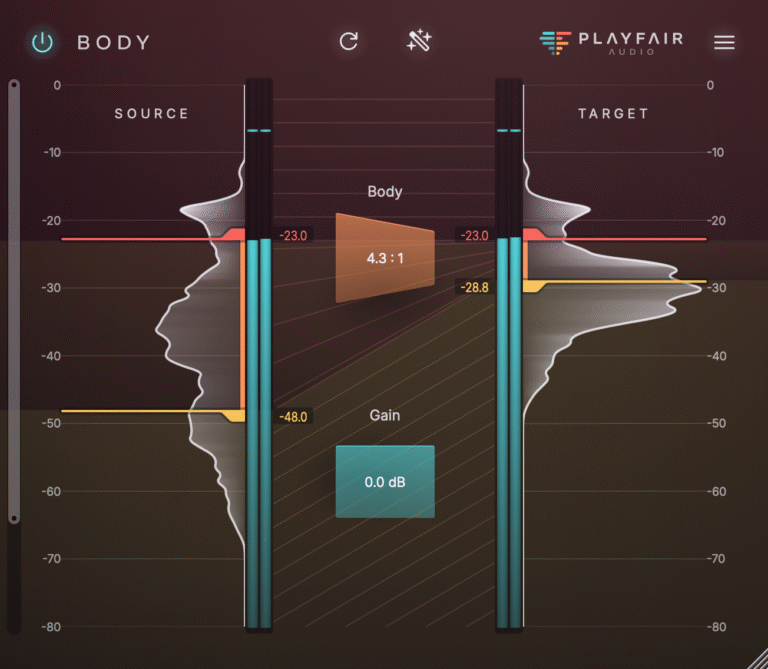Compression is one of the most powerful tools in a mix engineer’s kit. It can control dynamics, add weight, and bring consistency to a performance. But if it’s not used with intent, it can just as easily do the opposite of what you want. Instead of adding clarity and punch, compression can reduce energy, smear transients, and leave a mix sounding smaller than it should.
We’ve all been there. You tweak the ratio, bring the threshold down, push up the make-up gain, and at first, it sounds “better” because it’s louder. But after a while, the mix starts to feel flat and less alive. That’s the challenge with compression. It’s not about avoiding it altogether; it’s about knowing when, where, and how to use it to enhance rather than restrict the performance.
Here’s where things often go wrong, why it happens, and how we’ve designed Dynamic Grading to give you a more controlled, musical alternative.
Over-Compressing Individual Tracks
When compression is applied heavily to a single track, the performance can lose its natural movement. The subtle variations that make a vocal expressive or a snare hit feel human can get ironed out, leaving something that sounds more controlled but less alive.
It’s not just about dynamics either. Strong compression can change tone in subtle ways, pulling down peaks and shifting the balance of frequencies without you realising it. Over time, instruments can sound more boxy or constrained, as if they’re fighting for space instead of sitting comfortably in it.
The key is being intentional. Not every vocal, guitar, or drum hit needs the same treatment. Preserving contrast between tracks is what keeps a mix exciting and dynamic.
Losing the Groove
Punch isn’t just volume. It comes from the relationship between the transient and the sustain — the space between sounds that gives a track life and movement. A compressor with too fast an attack can clamp down on those transients so aggressively that the groove loses its edge. Kicks lose weight, snares sound less urgent, and the track stops moving the way it did before.
It’s easy to miss this happening in the moment. You add compression to make parts sit better in the mix, but later the track feels less energetic without knowing why. The best way to check is simple: bypass the compressor and listen again. If the groove feels better without it, the compression might not be serving the song.
Compression on the Mix Bus
Compression on the mix bus can enhance glue and cohesion when used with care, but it’s also where small settings can have a big impact. Because the compressor reacts to everything passing through it, a snare hit or vocal peak can trigger gain reduction that pulls other instruments down unnecessarily.
You might get more punch from the kick, but suddenly the overheads start pumping. Or a vocal sits nicely in one section, but the low end loses weight in another. When multiple elements are driving the compressor at once, balances you’ve carefully built can start shifting underneath you.
The safest approach is to use bus compression lightly, with smaller ratios and gentle gain reduction. A little goes a long way.
The Loudness Illusion
One reason compression gets used more than it needs to be is simple: louder usually sounds better at first. Adding make-up gain after compressing tricks your ear into thinking you’ve improved the sound, when really, you’ve just increased the level.
That’s why level-matching is so important. Always compare the processed and unprocessed signal at the same perceived loudness. When you do, it quickly becomes clear if the compression is genuinely improving tone and punch, or if it’s just making the track louder.
When Transient Designers Took Over
As engineers became more aware of these issues, transient designers gained popularity. By separating control over attack and sustain, they made it easier to add impact without wrestling with thresholds and ratios. Need more snap on a snare? Turn up the attack. Want a tighter kick? Reduce the sustain.
They’re quick and effective, but they’re not without limitations. Most transient designers apply changes evenly, without awareness of performance dynamics. That means a soft ghost note gets the same boost as a rimshot, which can make the result sound unnatural. You gain punch, but often at the expense of musicality.
A Smarter Approach to Dynamics
This is where Dynamic Grading comes in. Instead of relying on thresholds or fixed envelopes, it maps your entire signal to a dynamic histogram. That gives you the ability to shape how quiet, moderate, and loud parts behave independently, without guessing how the processor is reacting.
If you want more punch, you can enhance just the loudest transients, leaving sustain and ambience untouched. If a performance needs more balance, you can control mid-level dynamics without dragging up every quiet detail. And because you can see exactly what’s happening in real time, decisions become faster and more precise.
The result is more control, with fewer compromises.
Take Control of Your Mix
Compression isn’t the problem. In fact, it’s one of the most powerful tools we have. But getting the best from it means understanding what it’s doing and making choices based on what serves the music.
Dynamic Grading was built to make that process more intuitive and more musical. Whether you want extra punch, better consistency, or finer control over dynamics, it gives you the tools to achieve it without the trade-offs of traditional compression or one-size-fits-all transient shaping.
If you’d like to hear the difference for yourself, you can try Dynamic Grading today.
